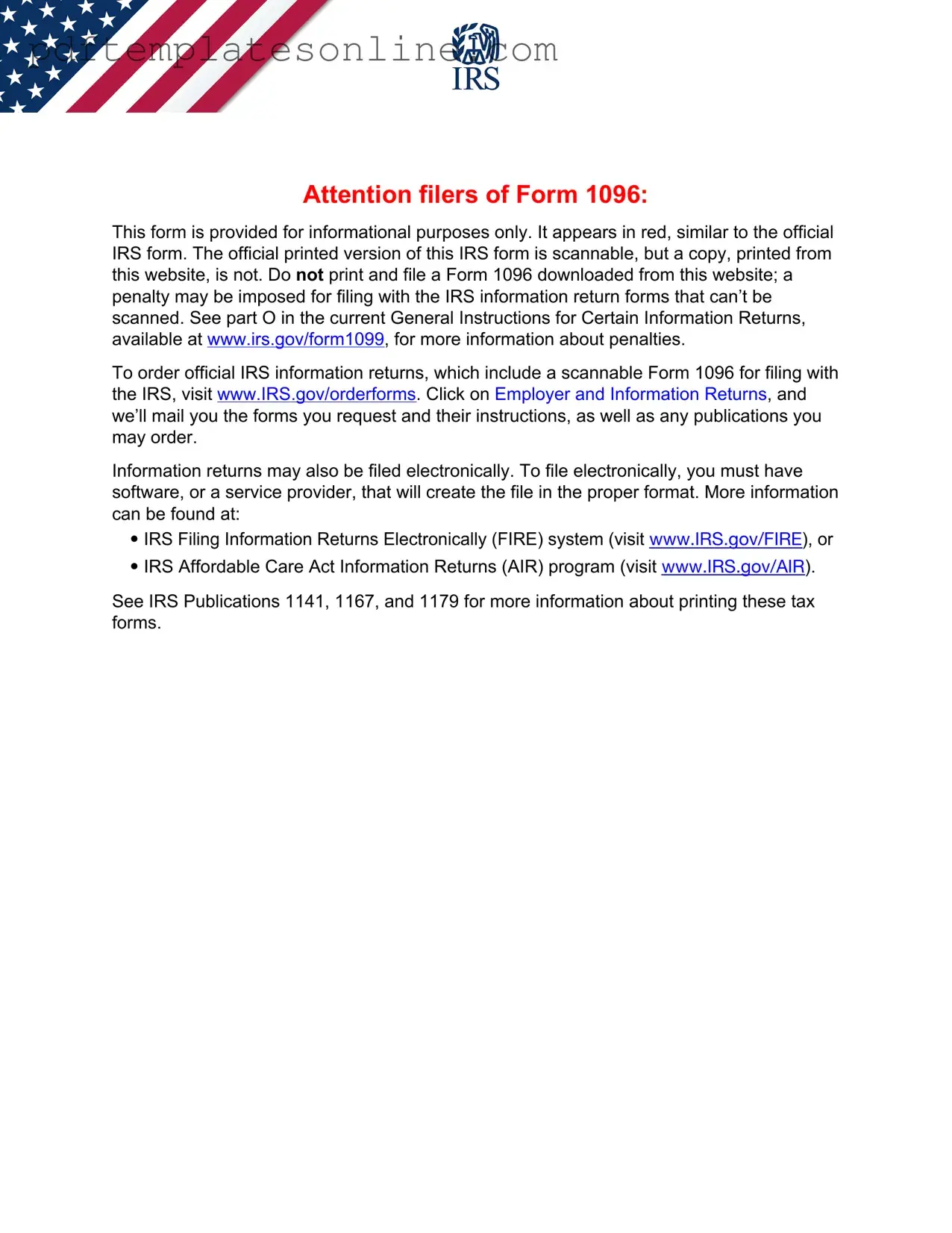Filling out the IRS 1096 form can be a straightforward process, but many people make common mistakes that can lead to delays or complications. One frequent error is not including all required information. The form requires specific details, including the total number of forms being submitted and the total amount of payments reported. Omitting any of this information can result in processing issues.
Another common mistake is miscalculating the total amount. This figure should reflect the sum of all payments reported on the accompanying forms. Double-checking these numbers is crucial, as inaccuracies can lead to penalties or additional scrutiny from the IRS.
Some individuals forget to sign the form. A signature is essential to validate the submission. Without it, the IRS may reject the form or request further documentation, which can slow down the process significantly.
Using the wrong year on the form is another pitfall. Each IRS form is specific to a tax year, and submitting a form with an incorrect year can cause confusion and may result in penalties. Always ensure the year at the top of the form matches the tax year for which you are reporting.
People often neglect to check the mailing address. The IRS has specific addresses for different types of submissions. Sending the form to the wrong address can lead to delays in processing. Always confirm the correct mailing address based on your location and the nature of your submission.
Not keeping copies of submitted forms is a mistake that can have long-term consequences. It’s essential to retain a copy of the IRS 1096 and any accompanying forms for your records. This practice can help resolve any discrepancies that may arise in the future.
Some filers may also fail to submit the IRS 1096 form in a timely manner. The deadline for filing is crucial. Late submissions can incur penalties, so it’s important to be aware of the due dates and plan accordingly.
Another issue arises when individuals do not follow the correct instructions for the form. Each year, the IRS may update its guidelines, and it’s important to refer to the most current instructions. Ignoring these updates can lead to errors that could have been avoided.
Lastly, people sometimes forget to verify their information against the IRS records. Mismatches between the information provided on the form and what the IRS has on file can lead to complications. Always ensure that names, addresses, and identification numbers are accurate and up to date.
